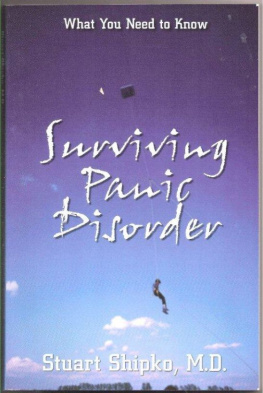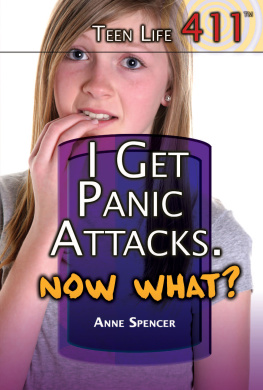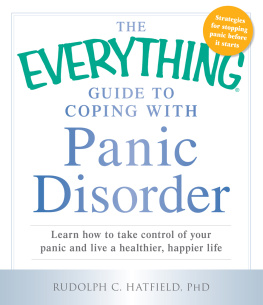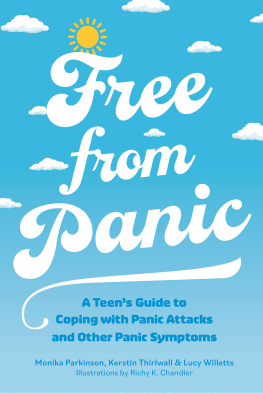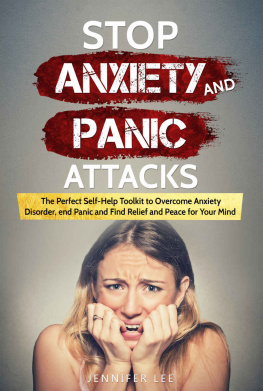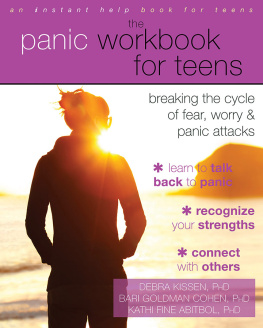Surviving PanicDisorder
By Stuart Shipko, M.D.
Copyright 2011 Stuart Shipko, M.D.
Smashwords Edition
Introduction
In 1836 after finishing a5-year scientific excursion to South America and the Pacific,Charles Darwin, returned to England to find himself almosthousebound. Doctors could not find a diagnosis for Darwinsproblems that included an overwhelming sensation of fear,palpitations, weakness and muscle tremor that overcame him wheneverhe left home. After making a rare speech at a scientific meeting hewas reported to have had 24 hours of vomiting. Remarking on hisresponse to stress, The Life and Letters ofCharles Darwin , cites Darwin havingwritten, " ... of late anything whichflurries me completely knocks me up afterwards, and brings onviolent palpitation of the heart."
Darwin probably had panic disorder.Today, he would not have had to suffer as he did, however it islikely that he would need to be an informed consumer of healthcareto get proper treatment .
I am a board certifiedpsychiatrist who specializes in panic disorder. Over the last twenty years I have personally examined andtreated well over 2,000 patients with panic disorder. In 1996 I put up the Panic Disorders Institute(PDI) web site. Besides presenting basic information on panicdisorder, the web site has a bulletin board where people can postquestions. The people who post these questions are usually underthe care of physicians, but in addition their physicians advicethey are seeking to become as educated as possible about panicdisorder. Self-education is an essential part of any treatment forpanic disorder. This is particularly true for the confusingpsychosomatic aspects of panic disorder.
In addition to my clinical experience theyears of reading and answering the questions on the bulletin boardhas helped me to understand what information is needed most bypeople with panic disorder. In this book I will share my knowledgeand experience with patients and their physicians. Panic disorderis an increasingly popular diagnosis. The actual incidence of panicdisorder is probably rising but it is also progressively morepopular with medical and mental health practitioners and oftengiven out casually to people who do not have it.
Panic attack is a labelused to describe almost any episodic medical condition that isfrightening and otherwise difficult to explain. It is part of ourcommon vocabulary and people commonly describe themselves as havinga panic attack whenever they have intense anxiety. People may go totheir doctors and tell them that they have had a panic attack, andthe doctor may initiate treatment for panic disorder taking them atface value. Even so, a panic attack is not in itself alwaysabnormal. Sometimes a panic attack is just an uncomfortable part ofbeing human and sometimes it is part of a larger condition thatrequires medical attention.
Because the diagnostic features of panicdisorder are completely descriptive one is technically correct tocall a wide variety of physical sensations and emotional fearspanic disorder. The disorder exists on a spectrum, with patientsexperiencing scary thoughts on one end and seizure-likeneurological events on the other. For this reason, people who aretold that they have panic disorder or think that they might havepanic disorder find it bewildering when they try to get moreinformation.
Beyond a summary of the literature on panicdisorder, I share my medical approach to identifying and dealingwith the key issues that face the person who may have panicdisorder. My opinions are primarily based on my own clinicalexperience in dealing with panic disorder. Panic disorder can beseen from a variety of viewpoints and other clinicians may havevalid opinions that differ from my own. All clinical impressionsare inherently subjective, embedded as they are in the art ofclinical medicine. Subjectivity aside, this is the information mostrequested by my patients, and that is of most value to thereaders.
Posted September 2001to the PDI bulletinboard by Rhonda:
Recently I found your website and I cantthank you enough. I have had horrible heartburn and panic attacksfor years. I get frequent sinus infections, migraine headaches andhave mitral valve prolapse. You were the first doctor to tie it alltogether for me. Thanks again.
Few medical conditions are associated withsuch a wide range of symptoms and associated medical problems. Thisis frustrating for patients because physicians look at each symptomor condition as a separate problem.
After examining in detail a large number ofpatients with panic disorder, I formed a significantly differentview of the condition than any text or article has ever presented.It is not only an episodic disease of attacks and phobias. It alsoincludes a variety of ongoing neurological and medical problems,personal, family and emotional difficulties, gastroesophagealreflux and insomnia. Beyond symptoms people with panic disorderseem more sensitive to stress, emotions, relationships andfoods.
Patients with panic disorder often have somany problems that they dont get the chance to discuss them allwith their doctors. When patients tell doctors about too manysymptoms at one time, the doctor becomes overwhelmed and tries tocut the interview short. At first, I too experienced thefrustration of trying to listen to patients who had too manyproblems. It was maddening from the standpoint of proper medicalpractice where we systematically evaluate each complaint. As thepatients told me about chest pain I considered a cardiologyconsultation and a series of tests to be ordered. As they told meabout headaches and dizziness I considered a neurology or ENTconsultation and another series of tests to be ordered. As theytold me about insomnia I considered the need for a referral to asleep disorder laboratory. It was impossible to order all the testsand make all of the referrals that the patients complaintssuggested.
As I saw more patients withpanic disorder, I became better able to sift through symptoms andorder appropriate evaluations, but this required that I spend hourson each new patient. The information gained in that manner wasmultiplied many-fold by the bulletin board on my website. Patientswould exchange support and information on a variety of topics. Manyof the same topics tended to recur every few months and I developedan understanding of just what information patients needed most. Ianswered questions and used the board to enhance my knowledge ofthis condition by posting my own questions and startingdiscussions. In this way I learned of many aspects of panicdisorder that patients and doctors dont usually discuss, whichmade me rethink the nature of the condition.
Despite my experience Istill find that panic disorder is not easy to understand. It notonly straddles the line between mind and body, within the body itstraddles several different medical specialties. A person mightonly have physical symptoms with no real sense of anxiety orenormous anxiety with only minor somatic symptoms. It is not asingle disease. It is a group of conditions that have in commonepisodes of seemingly inexplicable physical and emotional symptomsand the aggravation of these symptoms throughanticipation .
Chapter 1: MyJourney
The training of the medical school gives manhis direction, points him the way, and furnishes him with a chart,fairly incomplete, for the voyage, but nothing more.
Sir William Osler:Aphorisms from His Bedside Teachings and Writings
My interest in panic disorder began in theearly 70s while I was in medical school at the University ofMichigan. I noticed that a large percentage of patients hadanxiety-provoking symptoms and problems for which there was noexplanation. Patients were told, it is all in your head or itsjust stress or dont worry about it. The idea of emotionalstress causing physical illness was fascinated me. It was clear tome that emotional discomfort should cause emotional distress, butit was not at all clear to me how mental distress caused physicalillnesses.
Next page
